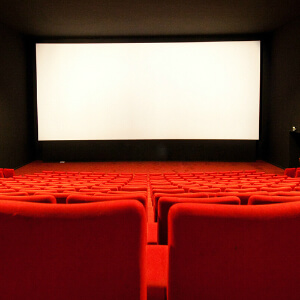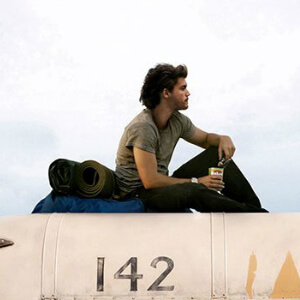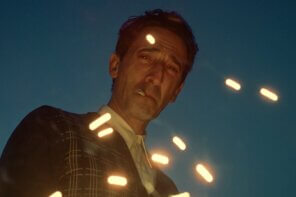It was just a normal Sunday in 1963 in the town of Greenville, South Carolina, when “the last pocket of resistance to secularity in the Western world gave in and served notice that it would no longer be a prop for the church.” So begins the now classic book Resident Aliens by Stanley Hauerwas and William Willimon.
The event they describe is the day that the Fox Theater on Main Street opened up on a Sunday for the very first time. Up until that time, church had no competition. Stores and restaurants, theaters and entertainment venues, often shut down on Sundays so employees could worship with their families. But things were changing, and the long held rules about what counts as “spiritual” were rapidly going out the window.
Fast forward to today, and things have changed so much that those who saw the Fox Theater as the first losing skirmish in the battle against secularity would probably believe that the entire war had been lost.
But if what they meant was that people ceased marking sacred space and time because they were going to the movies on Sunday, they would be wrong.
Friday Night Sermons
In the very places that secularity was supposed to have won out against religion, people today are being met by God. Where churches, temples, and mosques have always functioned as communal gathering places to reflect and be transformed through encounters with the divine, to those who have ears to hear, the theater is a place where inspired storytelling experiences become vehicles for the Transcendent.
Sermons are parables, and in a culture where we are supersaturated with flimsy pop religion, it takes a gifted sage to say something true enough to hold our attention. Complicating matters is that even when religion teaches a noble truth like “Love your neighbor,” religion also nurtures tendencies to judge, shame, exclude, and divide. Film, on the other hand, draws people together and makes up the deeply moral and theological mythology of our culture. If religious adherence is on the decline in North America and Europe, spirituality (for lack of a better term) is not. In theaters, on television, and streaming through subscription services like Netflix, human beings continue to seek and experience meaningful encounters.
 Research from Dr. Robert K. Johnston, among others, reveals that movies are not the frivolous time-wasters that our concerned parents may have warned us about. Theatergoers responding to surveys and interviews state that movies provide meaning-making experiences. After a difficult breakup, when searching for direction about a tough decision, or when seeking insight into the human condition, film provides an accessible and trustworthy sage.
Research from Dr. Robert K. Johnston, among others, reveals that movies are not the frivolous time-wasters that our concerned parents may have warned us about. Theatergoers responding to surveys and interviews state that movies provide meaning-making experiences. After a difficult breakup, when searching for direction about a tough decision, or when seeking insight into the human condition, film provides an accessible and trustworthy sage.
Moments of illumination occur in the most surprising places: A movie about a cabaret dancer becomes a parable of sacrificial love (Moulin Rouge, 2001). A satire on the empty facade of modern suburban life reveals the Transcendent in the mundane (American Beauty, 1999). The biographical tale of Alvin Straight’s lawnmower ride across Iowa urges us to recognize a guiding presence in the farm fields and impoverished rural towns of middle America (Straight Story, 1999). I suspect that each of us can recall our “Aha!” moments, when the aroma of popcorn and melted butter became an incense as we were drawn to experience something more than ourselves, outside of ourselves, while we were lost in the onscreen world.
On a personal level, while the religious instruction I was brought up in and which I studied formally in college and graduate school gave me consistent spiritual and ethical nourishment during my most formative years, the most singularly transformative moments of my life have all occurred in the presence of film and the arts. For example, The Tree of Life (2011) and the short film, Gratitude, opened me to the spectacular, chest-filling presence of God in our everyday experiences. Departures (2008) revealed the sacredness of life, by juxtaposing it with the beauty of ritual burial. And time after time, The Descendants (2011) moves me to contemplate life under the sun to find hope in the face of despair.
Church Music
Art often creeps in around the edges of our rational defense. Fix your gaze on a painting, tune your ears to a new piece of music, or head to the nearest theater and you may find a new orientation towards life that you formerly thought untenable or perhaps were unable to perceive. We are rational creatures, but we are not solely rational. Anything that touches our emotions transforms and changes us. And even the “Aha!” moment of discovery that comes from a philosophical or mathematical discovery is only cemented into place by the emotional realization of delight. As formerly disparate pieces of reality are drawn together into a coherent shape in our minds, our natural tendency is to feel joy at the new sense of harmony, but this tends to happen without our being conscious of it.
Krista Tippett is an award winning journalist who hosts the radio program On Being. In a recent episode Tippett interviewed composer Gustavo Santaolalla (Santa-Oh-Lie-ah) and called attention to the profound way that movies move us. He notes that soundtracks have become the music of a new kind of church. In film, the soundtrack more than anything else is tasked with guiding our emotions. Yet soundtracks often escape our notice. As Tippett points out, unless a score includes spectacular movements like the anxiety-inducing violins of Psycho, the average musical score blends into the background so well that you almost forget it’s there. Yet, by speaking to the supra-rational part of our beings, soundtracks tell us how to feel, and therefore, what to think.
 Santaolalla has scored numerous films, including Motorcycle Diaries, 21 Grams, Babel, and Into the Wild. He understands that film, as art, is a meaning-making activity: “There is a process when you see a great piece of art or hear music, where you learn about yourself, about life. And when we learn, we are changed. It is very revolutionary. By learning, we are being transformed, even if it is something we cannot articulate.”
Santaolalla has scored numerous films, including Motorcycle Diaries, 21 Grams, Babel, and Into the Wild. He understands that film, as art, is a meaning-making activity: “There is a process when you see a great piece of art or hear music, where you learn about yourself, about life. And when we learn, we are changed. It is very revolutionary. By learning, we are being transformed, even if it is something we cannot articulate.”
This transformation is what religion promises, and perhaps rightly so. But when religion fails to live up to expectations, absence of meaningful transformation becomes a source of disenchantment. Ironic as it may seem in light of Hollywood’s glitz and glamour, movies may contain an honesty that is lost to many who choose to remain in enclaves of religious nomianism. We may not be able to describe how we are different after a film experience, but through the encounter with the Other, we have been changed.
Encountering the Divine
Santaolalla defines art (and film) as “organizing reality,” rightly understanding that art is at the core of what it is to be human. This is an ancient idea, with roots in the Judeo-Christian tradition. In the poem that begins the Hebrew Scriptures, humanity is tasked with “naming,” giving order to the earth, at the first moment of consciousness. The power of film as art is that it offers filmmakers the chance to make sense of the world and continue this ancient ordering process. As we react as viewers to what we see and hear onscreen, we participate in this process by engaging the film with our own history of experiences and ideas to articulate new meaning for our own context as we grasp at understanding reality.
But this is only half the equation. Beyond what the filmmaker intends, and beyond what we bring with us into the darkened theater, inexplicably and unpredictably we encounter something beyond what exists on the screen. In the darkness of the theater we experience more than the sum total of what we and the filmmaker brought with us. This is the religious experience. In a prophetic move, the Transcendent breaks through our expectations and reveals itself, confronting us with wonder, longing, conviction, guidance.
In a culture where mainstream religion uses the vernacular of “having a relationship with God,” but often means by it “adhering to our set of rules,” film offers an honest vehicle for the Transcendent that cuts through traditional religious categories to offer life-giving transformative experiences to all. Seated among other seekers, those who have ears to hear and eyes to see will find more than they are looking for.
Republished with permission from Periecho.com





